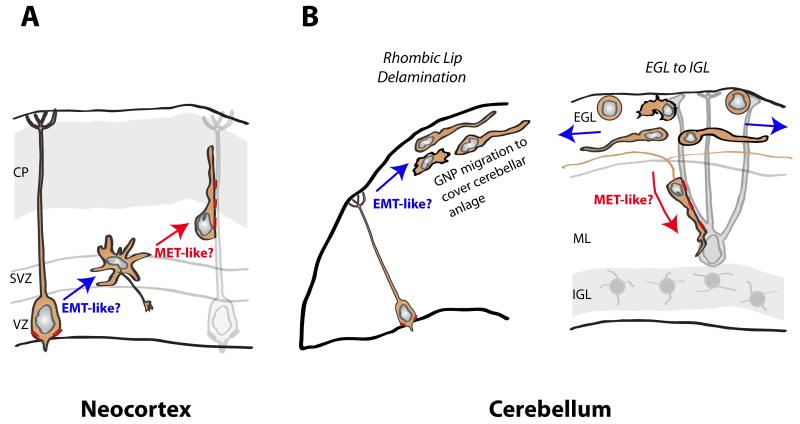Figure 5.
Potential EMT and MET parallels in the developing neocortex and cerebellum. (A) In the neocortex, the transition between RGC polarity and the multipolar state may be EMT-like due to loss of junctions and apical-basal polarity, as proposed recently [116]. Transition between the multipolar state and radial migration may be MET-like as cell-cell junctions are re-established. Moreover, radial polarity may be associated with establishment of axonal and dendritic domains, a hallmark of classical neuronal polarity. (B) In the developing cerebellum, the delamination of GNPs from RGC progenitor cells in the rhombic lip may be EMT-like, as is the delamination of neural crest cells (another dorsal neural tube–derived cell type). Moreover, the transition from tangential migration within the EGL by GNPs and nascent CGNs (blue arrows depict migration paths) to radial migration by polarized T-shaped CGNs may be MET-like. As stated in the text, radial migration polarity, characterized by parallel fiber axons and prominent neuron-glial connections containing JAM-C, is stimulated by Pard3A activity. Red springs denote AJ and neuron glial junctions.

